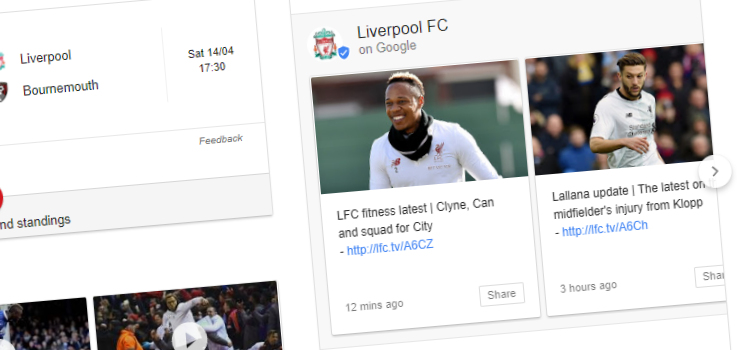
It is estimated that only between 1% and 2% of all visitors to websites are actually ready to make a purchase, whether that be via an online shop or inquiring about a service. This means that almost 99% of visitors to your website are either simply interested in your website's content or are researching for a future purchase. And the only circumstances in which these visitors may return to your website when they are actually ready to make a purchase are as follows:
- They are already customers and will return to make a repeat purchase or investigate your other offerings
- They were referred to your website by a friend, family member or colleague and will look you up again
- They find your website or product/service so compelling that they either bookmark your website or feel compelled to frequently return
- They accidentally stumble upon your website again while searching
- They are enticed to provide you with their email address by signing up for your newsletter or similar offer and then read your newsletter and visit your website as a result
Even in extreme cases, probably only a few percent of visitors to your website would fall into any of the above categories, and existing customers can be discounted since you are presumably already in frequent contact with them anyway. Again, this means that the vast majority of visitors to your website are being lost, not necessarily because your offer isn't compelling, but because timing is everything - just like in the real world, where visitors to a store are often not ready to make a purchase yet, sometimes the time just isn't right for your website's visitors.
But unlike in the real world, where store-owners are unable to target only visitors to their store with advertising, you can advertise only to people who have visited your website. Ever wondered why you could be browsing, for example, men's shirts and then later see adverts for men's shirts on an entirely unrelated website? This is an example of a technology called "retargeting" (sometimes called "remarketing"),a form of what's called "behavioral advertising" because targeting is based on people's previous online browsing behavior.
Why Use Retargeting?
The beauty of retargeting is that you already know that your targets have some level of interest in your product or service, and advertising to them therefore generally has a lower cost-per-acquisition (CPA) than blanket advertising or even advertising targeted to specific demographics. In addition, because you will target visitors to your website regardless of how they got there (e.g. from a print advert),you will ultimately decrease the CPA of all your marketing channels by increasing the number of total visitors who are converted into customers.
Another benefit of retargeting is that you are suddenly able to advertise on a much broader variety of websites. For example, it is unlikely that you could afford to purchase an advertising campaign on CNN, but since most premium websites display ads from networks such as Google Ads, your retargeting adverts will be displayed on an impressive selection of websites. What's more, in nearly all cases, you will only pay when someone clicks on your advert, so you don't need a large budget and retargeting therefore represents little risk.
Types of Retargeting
While the premise of retargeting always remains the same, there are different companies offering different ways to retarget your website visitors:
- Retargeting on Other Websites: There are two different ways to use retargeting on other websites:
- Show text or image ads only to people who have already visited your website while they are browsing the internet (you can do this using Google Ads without using search advertising)
- Show video "pre-roll" ads to people who have already visited your website while they visit YouTube or other video websites.
- Search Retargeting: If you are a Google Ads search customer (that is, you show adverts to users who search for specific keywords and pay Google when the user clicks on your ads),you can use retargeting in two different ways:
- You can increase your bid for existing keywords when searched for only by people who have already visited your website
- You can bid on additional keywords when searched for only by people who have already visited your website
- Social Retargeting: There are two different ways in which you can retarget people on social networks:
- You can retarget visitors to your website by advertising only to them using text or image ads on most of the major social networks
- If you upload a list of email addresses or telephone numbers to Facebook, they can match this data to the corresponding user accounts, giving you the opportunity to advertise only to those people
How Does Retargeting Work?
Retargeting might sound complicated, but of all online marketing methods it is actually the one that requires the least amount of research and ongoing maintenance. Aside from testing different adverts and the timing and frequency of their display, you don't need to worry about researching keywords, demographics and placements like you do with other forms of online advertising. Here are the basic steps in setting up a retargeting campaign:
- You create one or more "remarketing lists" for your website with your choice of retargeting service (such as Google Ads or Facebook. You could have one list for everyone who visits your website but it is more effective to have a separate list for people who viewed pages related to specific products or services so that you can show them highly-targeted ads. These lists should also specifically exclude people that actually made a purchase or submitted an inquiry, since there is usually little benefit from retargeting them.
- You integrate the code provided for each list into your website's HTML code
- When someone visits your website a cookie is placed in their browser, adding them to one or more of your remarketing lists
- When that person visits other websites relevant to the retargeting service you are using, they are shown adverts for your website which are specific to the remarketing list they belong to. You can usually dictate how frequently people on your remarketing lists are shown your adverts (after all, you don't want to irritate them) and when they are shown (for example, you may want to only show ads to visitors for three days after they visit your website or only after a week has passed since they visited)
Retargeting Examples
Based on what we've discussed so far, here are some examples to demonstrate the power of retargeting:
- You have an online store and you have a remarketing list for people who add items to their shopping cart but don't complete the check-out process. For several days afterwards you advertise a 10% off code to them on lots of websites that they frequently visit, and then for the next week you advertise a 20% off code to them.
- You have an online store and you have a remarketing list for a specific product page. For several weeks after someone visits your website but does not make a purchase, you advertise other products to them which are related to the one they were viewing.
- You run a legal services business and you have a remarketing list for people who visited a page related to a specific service you offer. For a whole month afterwards you occasionally advertise this service to them, highlighting different benefits of your service each time, on lots of websites that they frequently visit.
- Someone phones your office to inquire about your services after seeing a print advert for your business but they don't make a purchase and don't call back. After a week you upload their phone number to Facebook and display adverts for your services to them.
- You run a Google Ads search campaign and you increase your bid (the amount you are prepared to pay per click) by 20% when the user in question is on one of your remarketing lists.
- You run a Google Ads search campaign and instead of bidding only on keywords which are very specific to what you offer, you bid on more keywords when the user in question is on one of your remarketing lists.
Conclusion
If you are already engaged in search or display advertising online, it makes little sense not to continue to advertise to visitors to your website who did not become customers by using retargeting - it usually costs significantly less than search ads and gives you a second opportunity to convince people to buy your product or service. And if you are not already engaged in online advertising, retargeting offers you a low-risk introduction, while at the same time improving the effectiveness of your other marketing efforts.


